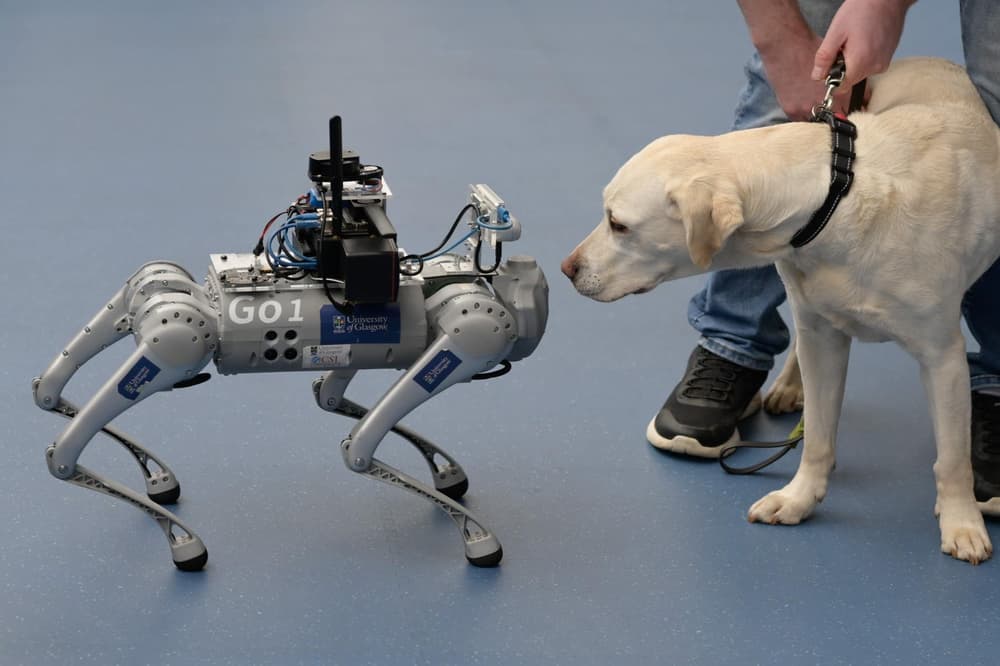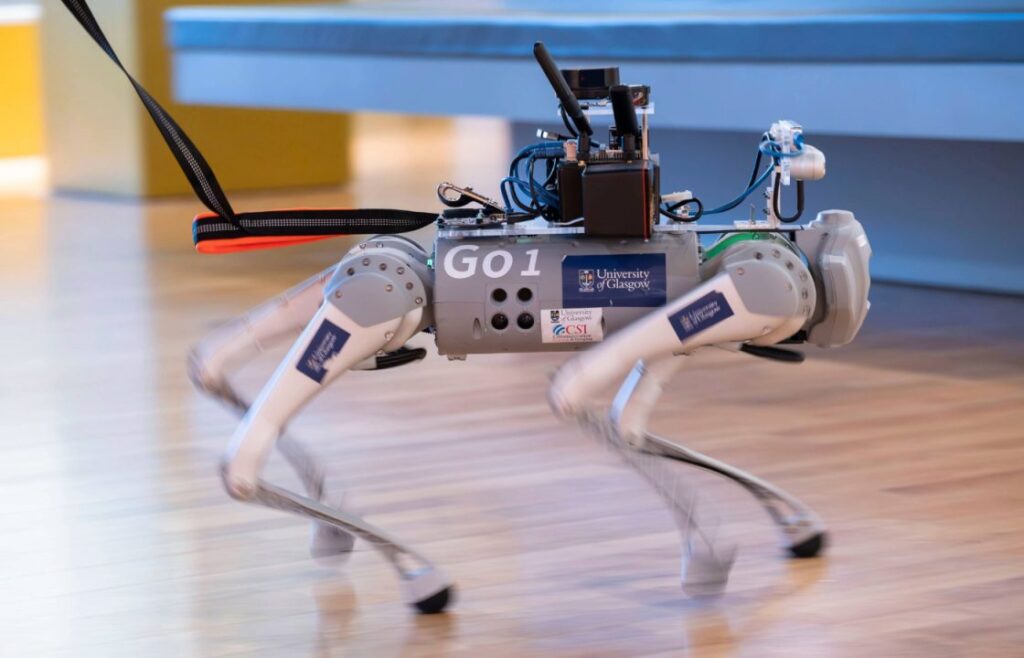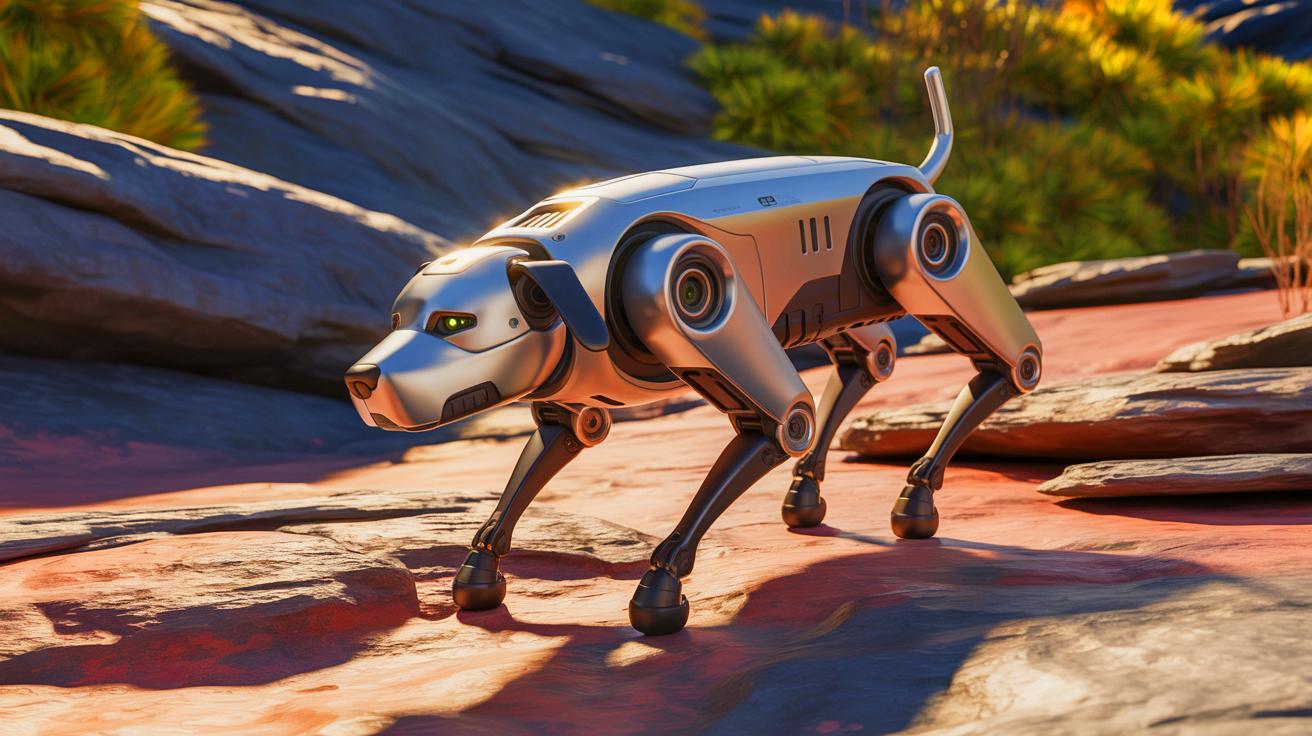In a stunning demonstration of the power of artificial intelligence, researchers at the University of Leeds have developed an AI-fueled robot dog capable of learning animal like gaits in under 10 hours without any human guidance. This innovation isn’t just a marvel of engineering; it’s a window into the future of robotics, where machines no longer require step by step programming but instead can teach themselves how to move, adapt, and thrive in unpredictable environments.
Imagine a robotic creature walking with the same grace as a cheetah across rocky terrain or climbing over rubble with the caution of a wolf. Now imagine it teaching itself these movements purely from observation and trial. That’s exactly what this new AI-fueled robot dog is achieving.
The Breakthrough Behind the Technology
The success of the AI-fueled robot dog lies in its cutting edge learning algorithm, which simulates the way real animals learn to walk. Rather than being programmed with specific instructions, the robot uses reinforcement learning a trial and error based AI method where it tests different motions and keeps improving based on results. The system is bolstered by advanced sensors and real time data processing that mimic how living beings respond to their surroundings.
Dr. Jacob Klein, lead AI engineer at the University of Leeds, explains, “We wanted to eliminate the dependency on pre defined models. Our robot learns in real-time, adjusting its gait for sand, gravel, stairs, and more without a single line of manual control.”
This AI-driven learning system took under 10 hours to master complex animal gaits such as trotting, pacing, and galloping. It’s a level of efficiency that even shocked the development team.
Real World Applications: More Than Just a Cool Trick
The implications of the AI-fueled robot dog are immense. From navigating collapsed buildings in disaster zones to inspecting hazardous nuclear sites, these robots can go where humans can’t and now, with the same sure footedness as the animals that inspired them.
Search and Rescue
In a controlled trial conducted in collaboration with the UK Fire and Rescue Service, a prototype of the robot was deployed in a simulated earthquake zone. Within minutes, it navigated unstable terrain, identified survivors using heat sensors, and sent data back to operators. Unlike traditional robots that require remote control, this dog needed no input it simply adapted to its environment.
Commander Alex Trent, who supervised the test, said, “This is beyond anything we’ve seen. It’s like watching a trained rescue dog, except this one never tires, never gets injured, and can go where no human or animal can safely go.”

What the Scientific Community Is Saying
Dr. Maya Lin, a robotics ethics expert at MIT, emphasizes the importance of autonomy in the next generation of robotics. “The ability of this AI-fueled robot dog to operate without human intervention is not just a technical feat, but a philosophical milestone. We’re moving toward machines that understand context, not just code.”
Similarly, Prof. Tomás Hernández from ETH Zurich sees this as a foundation for future development, “These results redefine what we thought possible in self learning machines. The fact that it mimics biologically evolved gaits gives it a natural edge in navigating the human world.”
Personal Experience from the Lab
Anna Mahmood, a PhD candidate working on the project, shared her firsthand experience with training the robot, “We expected some trial and error, maybe even some failure. But seeing it take its first self learned steps like a fawn learning to stand was emotional. It wasn’t just a robot it was learning like a living thing.”
Why This Breakthrough Matters Now
This innovation arrives at a pivotal time when the world is facing increasing environmental challenges, geopolitical instability, and aging infrastructure. Having a self learning, adaptable, and durable machine that can assist in areas too dangerous for humans is no longer a futuristic dream it’s now a necessity.
Moreover! the robot’s ability to adjust to new terrains opens doors in space exploration, military reconnaissance, and agricultural automation. With the current pace of development, experts predict fully autonomous robots with real animal behavior to be commercially available within the next five years.

The Future: Smarter Robots, Safer World
This AI-fueled robot dog is more than just a scientific marvel it’s a promise of a safer, more efficient future. A world where robots no longer stumble through rubble or fumble over terrain, but move with the confidence and agility of nature’s own creations.
Whether in nuclear decommissioning, search and rescue, or environmental monitoring, the role of autonomous robots is expanding rapidly. And thanks to the groundbreaking work at the University of Leeds, that future is walking toward us on four legs, no leash required.


1 thought on “AI-Fueled Robot Dog Stuns Researchers by Learning Real Animal Gaits in Under 10 Hours Without Human Intervention”